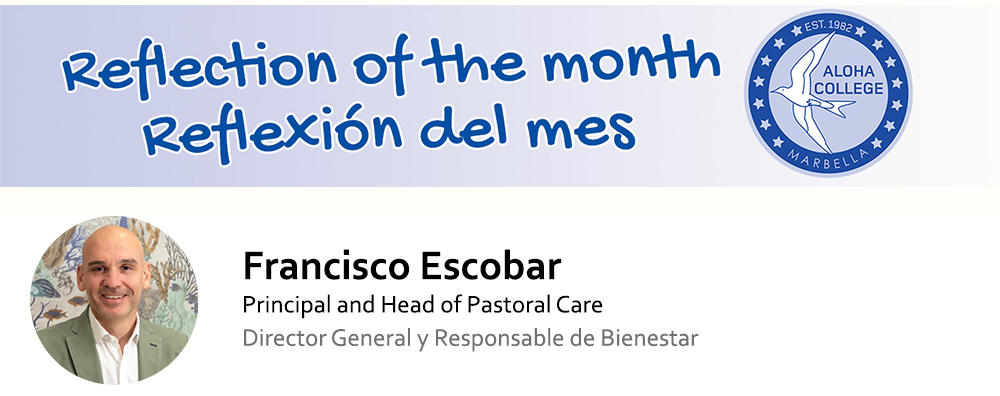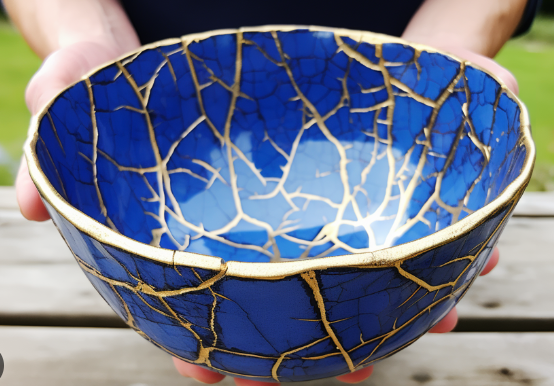
Dear parents and colleagues,
I love Japanese food. My favourite place for this is a cosy, authentic bar in Marbella that offers a great selection of sushi. Recently, I was there with a very good friend of mine. As we sat at the bar, less than one metre away from the chef, we were captivated by the precision with which he divided the sushi rolls into pieces.
While we watched the chef’s precision dividing the sushi rolls, I noticed several times during the process that some ingredients would escape from the roll, creating a mess on the chopping board. Now, one might have expected him to discard this roll and start a new one. However, he delicately gathered the ingredients and placed them back. As the roll came together, there were signs of an imperfect piece of sushi. Yet, the chef appeared to be proud of the finished product. I nudged my friend and said: “You know what, I have just found my inspiration for this month’s reflection!” No, not about sushi, of course, but about the lesson of embracing imperfection.
While we might not shout it from the rooftops, especially when we are young, most of us secretly hope to find perfection in different areas of our lives. We daydream about finding that perfect friend, a job that we truly enjoy, a happy family life and the admiration of those around us. Life, with all its surprises, sometimes throws a few twists and turns, often leaving us with nothing but broken dreams, different from what we once imagined.
In moments of disappointment, we can draw inspiration from a Japanese concept rooted in ceramics. It suggests that when pots, cups and bowls get damaged, we should not just discard them. Instead, they deserve our respect and attention. This tradition is called Kintsugi where Kin means golden and Tsugi means joinery, quite literally signifying to join with gold.
In this approach, the broken pieces of a damaged object are thoughtfully collected, reassembled and bonded using lacquer infused with gold powder. There is no need to hide the damage!
Kintsugi is thought to have started in Japan when the shogun Ashikaga Yoshimitsu broke his favourite tea bowl. When he sent it to be repaired, it came back with ugly metal staples holding it together. He was not happy with the result and asked a craftsman to come up with a better idea. They created a method that did not hide the damage but made it look like art. Kintsugi is connected to the philosophy of wabi-sabi, which appreciates simplicity and the beauty of things that have aged naturally or look weathered.
In an age that celebrates youth, perfection and the new, the practice of Kintsugi carries a valuable lesson, not just for objects but for our lives as well. The idea is to make the flaws beautiful and strong, emphasising that imperfections have their own unique value.
I might need to make more visits to my favourite sushi bar with my friend. Who knows what other life lessons I will discover in front of a plate of sushi?
I hope you have a lovely half-term break.

Yours sincerely,













